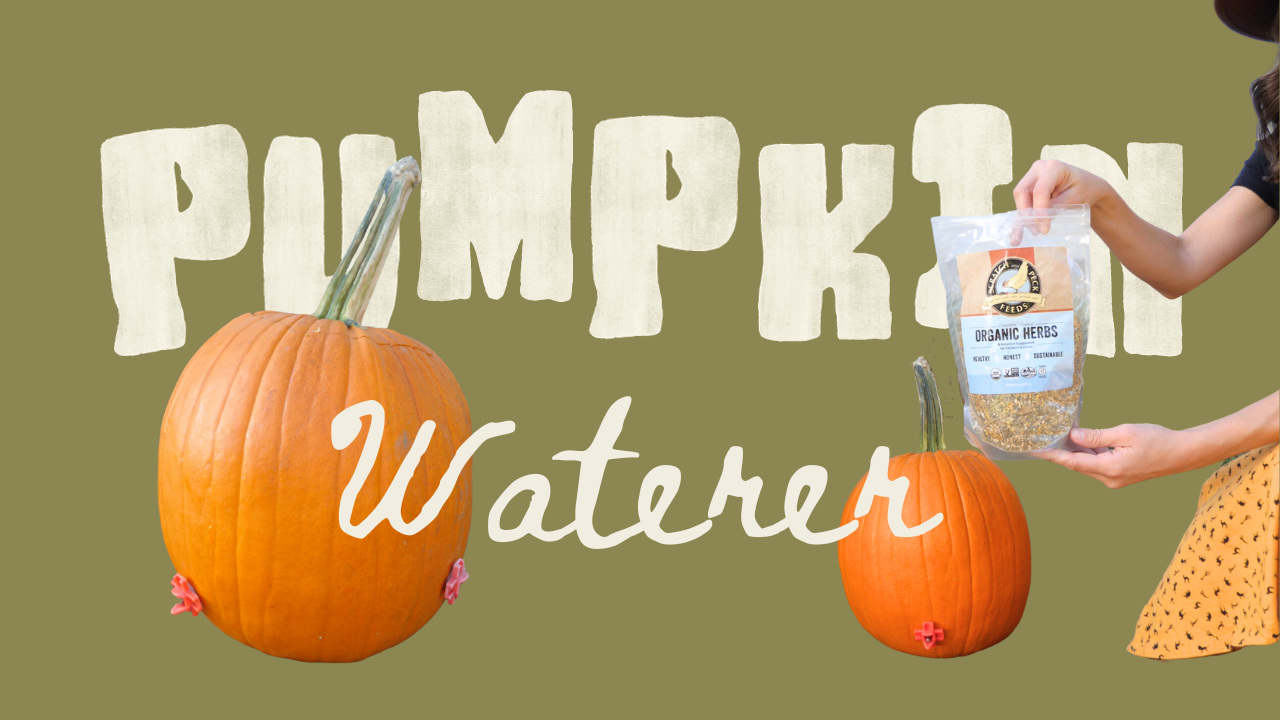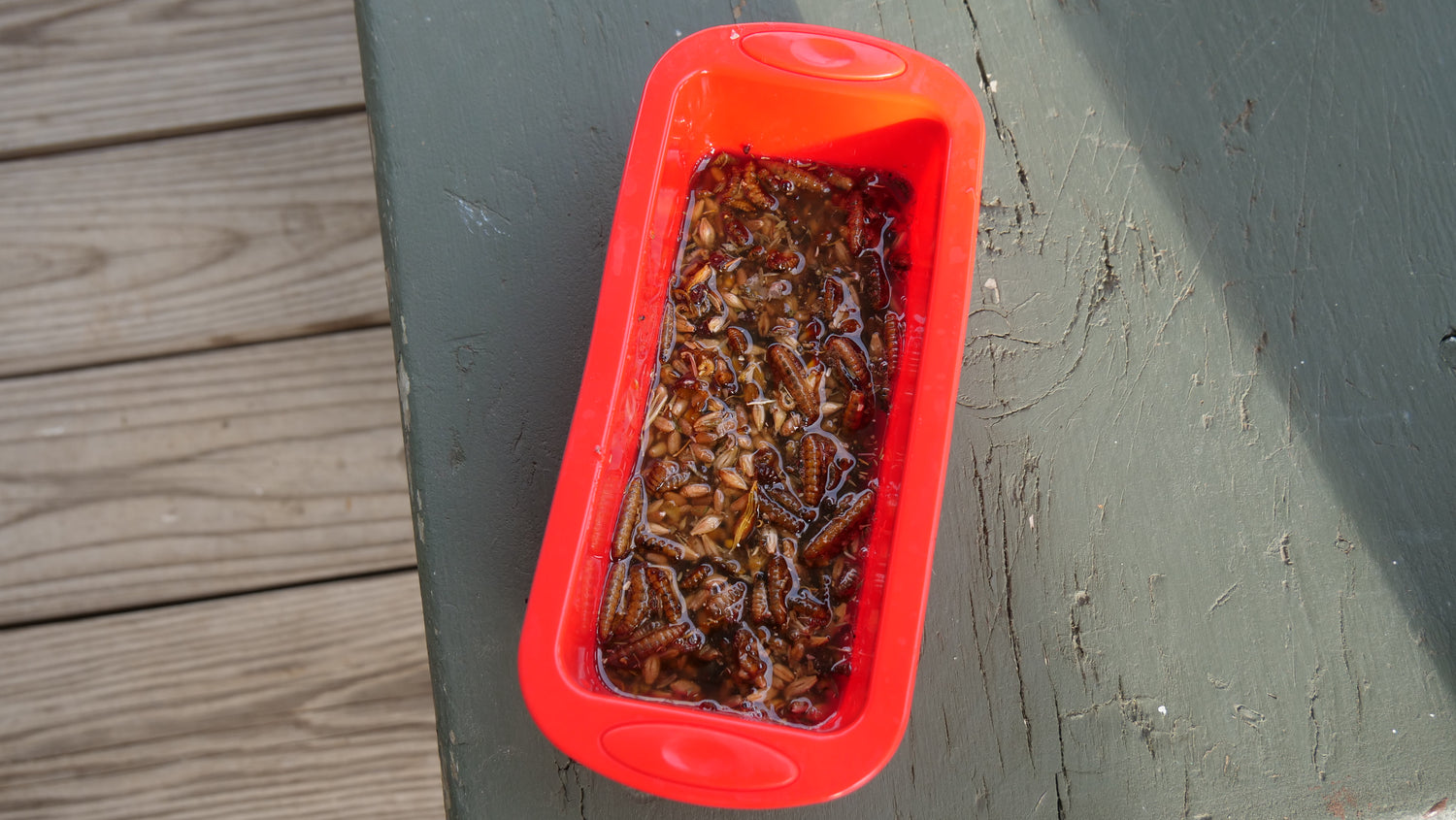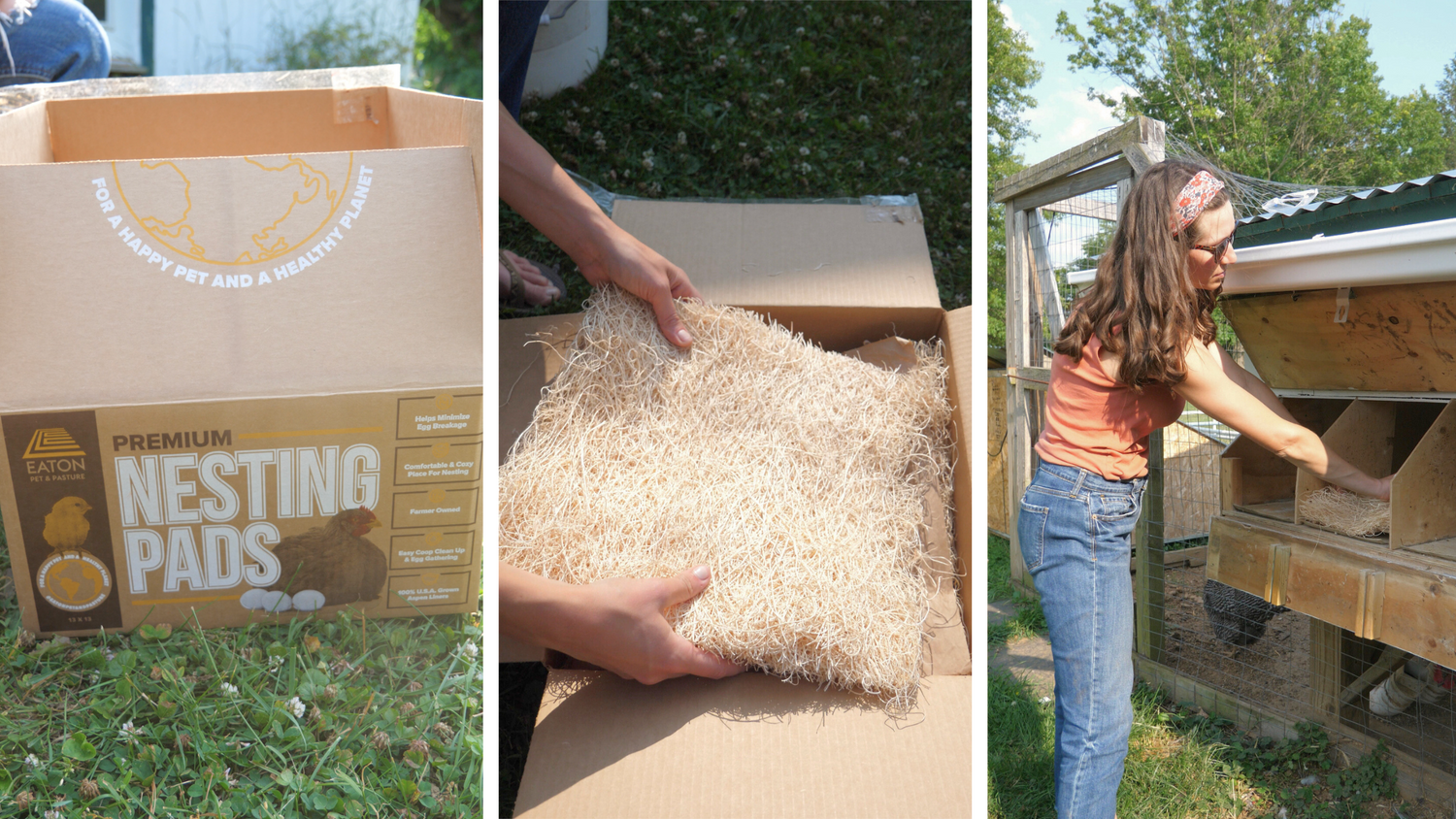This blog post contains affiliate links. If you purchase an item using our link, we may receive a small commission at no additional cost to you.

Suet is typically associated with wild birds but it can also be a fun treat for chickens! It also is a treat that can provide extra nutrition and energy for your flock.
What is Suet for Birds Made Of?
Traditionally, suet for birds is a high-energy treat made from the fat that surrounds the kidneys of cattle and sheep. The rendered fat is often referred to as tallow. Suet can also be made from other forms of fat such as lard.
The fat is typically mixed with healthy, nutritious additions:
- Seeds
- Grains
- Unsalted nuts
- Unsalted nut butters
- Dried fruits
- Grubs
-
Herbs
The fat provides a concentrated source of calories for chickens, which can be beneficial during colder months when they need additional energy to stay warm and don’t have as many opportunities to forage for bugs and yummy green things!
When is the Best Time to Feed Suet to Chickens?
It’s best to give your chickens suet during colder seasons. Winter, in particular, is when chickens can use the extra caloric boost to help withstand low temperatures.
Additionally, providing suet during molting periods or when your chickens are stressed can aid in the feather regrowth process and support overall well-being.
We suggest avoiding suet in the warmer months because the rendered fat used to make the suet may go rancid before the chickens eat the entire treat!
How Much Suet Can You Feed Chickens at Once?
While suet is a healthy addition to their diet, moderation is key.
Too much fat can lead to health issues such as obesity and related complications. It’s important to remember that suet is a “treat” and should not be used as a replacement for feed. Treats should not exceed 10% of the chicken’s diet.
Also keep in mind that some of the more dominant chickens in the flock may hog the treat! Monitor this and consider splitting the treat serving in half and placing in two different areas to allow the entire flock to enjoy the treat.
Homemade Suet Recipe for Chickens:
Creating your own suet treats is not only cost-effective but allows you to control the quality of the ingredients. We source feed, grubs, and herbs from Scratch and Peck Feeds. You can use our code “MASONDIXON15” for 15% off your order!
Here's a simple recipe to get you started:
Ingredients:
- 1.5 cup of rendered suet (tallow) or lard
- 1.5 cup of high quality grain feed (Our favorite is from Scratch and Peck Feeds)
- 3 Tablespoons of Grubs (Check out Scratch and Peck Feeds Cluckin’ Good Grubs)
- 2 Tablespoons of Organic Herbs (Scratch and Peck Feeds sells Cluckin’ Good Organic Herbs which are specifically selected for their known beneficial attributes and natural preventative properties)
Instructions:
- Melt the tallow or lard in a saucepan over low heat until completely liquid.
- Mix the dry ingredients together in a mixing bowl.
- Combine the melted fat with the dry ingredients.
- Stir the mixture thoroughly to ensure an even distribution of ingredients.
-
Pour the mixture into molds or containers and allow it to cool and solidify.
We prefer using silicone molds but if you plan to use another container, you may want to line it with parchment paper to make it easier to remove from the container.
- Allow the treats to fully solidify before feeding to your flock. We place ours in the freezer to speed up this process. If you plan to cut the treats into smaller pieces, Allow it to freeze partially and then cut or break it into smaller, manageable treats before it is frozen solid.
- Store the treats in the freezer until ready to use.
Modify this recipe as desired by adding dried fruit, unsalted nuts, or additional seeds. Remember to feed fruit and nuts in moderation!
Where to source tallow or lard:
Believe it or not, you can purchase tallow or lard online. Rendered fat may be challenging to find in store.
We recommend sourcing tallow or lard from a local farm if possible. Look for rendered fat or fat sources that come from pasture-raised, antibiotic free animals.
If you can’t find fat already rendered, you can render it yourself! We buy our meat in bulk locally from a farm that raises animals on pasture. When we receive our bulk meat, we also request the animal fat. We then render this fat ourselves using a crockpot.
Here’s how to render lard in a crockpot:
What type of container should I use to make the Homemade Suet Cakes?
We prefer using silicone molds but if you plan to use another container, you may want to line it with parchment paper to make it easier to remove from the container.
Any silicone mold will work.
We use these:
But large silicone ice trays are popular too:

Experiment with different ingredients to cater to your chickens' preferences, and watch as they eagerly indulge in these nutritious and delicious treats.






